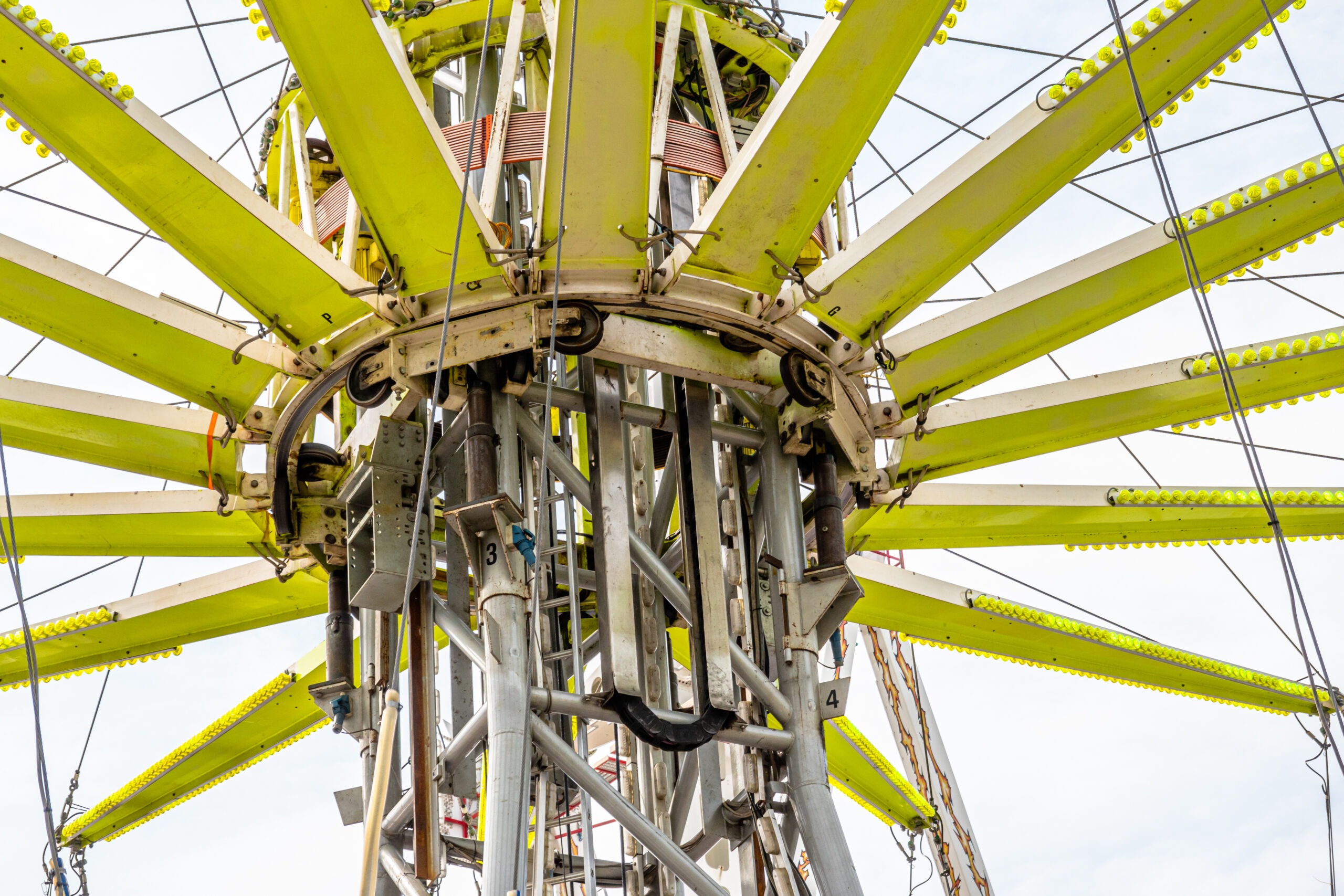Next time you are hurtling around a track or being flung upside down on a rollercoaster, you can thank the world of hydraulics and pneumatics for creating the head spinning, stomach churning sensations you are feeling all whilst keeping you completely safe.
How are hydraulics and pneumatics used in rides?
So how are hydraulics and pneumatics used in rides? Firstly and, some would argue, most importantly, most rollercoasters use them for brakes. The brakes keep the passengers safe, stop a car at a desired location in a safe and controlled way, prevent the cars from bumping into each other and keep the riders free from injury. Pneumatics are also used to hold people in place on rides with lap bars that lock firmly into place when a rider takes their seat.

Hydraulic cylinders are also used to create the sensations on the rides. They can create swing, tilt and rise and fall in rollercoaster rides as well as being responsible for spinning horizontal rides such as those described as ‘walls of death’, which can be raised to tilt to an angle of 90 degrees using hydraulics. Hydraulics also help cars to switch track paths and align them to a more favourable position for the riders’ enjoyment. Hydraulics are more exact and precise than pneumatics, they are rugged and self-adjusting, so can be found on many different rides at an amusement park. They are also a very cost-effective way of creating the movements a rollercoaster designer needs.
Simulators have long used hydraulics to create a sense of motion. Think of the flight simulators or the F1 simulators that exist – stand outside it when it is working and watch the hydraulics in action as the system moves through almost 360 degrees without ever leaving the ground. The hydraulic designers behind these rides have created systems using multiple cylinders and controls.
So the next time you are on a rollercoaster, think about how they are powered, what is keeping you safe and inside the cart, what is creating the motion you are experiencing. The chances are that the answer is hydraulics.





Select a country